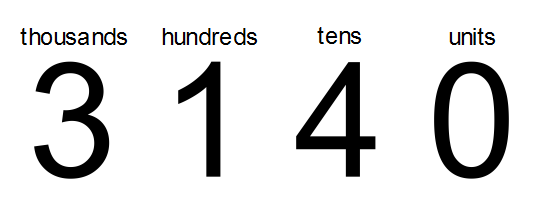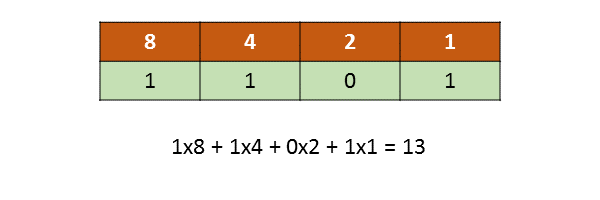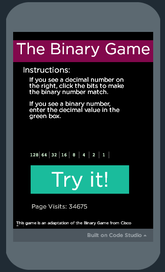The Binary number system
1111 is a binary number and 1111 is equal to 15. Another binary number is 1000 0001 which is equal to 129. But how is this? Well it is all because of "place values".
The denary number 3140 is said as "three thousand, one hundred and forty" because of where the 3, 1, 4 and 0 are placed.
The denary number 3140 is said as "three thousand, one hundred and forty" because of where the 3, 1, 4 and 0 are placed.
- There is a 3 in the place value "thousands"
- 1 in the place value "hundreds"
- 4 in the place value "tens"
- and zero in the place value units.
Binary has place values too, just different ones. The place value on the right side is not called "units", it is called 1. Going left, 1 is doubled and is 2. Going left again, 2 is doubled and the place value is 4. This repeats.
Below, 1101 is equal to 13 because those place values are switched on and added together.
Finally, just like denary wee all stop writing the place values and are able to identify that binary 1001 is equal to.......?
- So, the binary number 0000 is equal to 0 denary because none of the place values are switched on (all zeros)
- the binary number 0001 is equal to 1 denary because only the the place value 1 is switched on
- the binary number 0010 is equal to 2 denary because only the the place value 2 is switched on
- the binary number 0011 is equal to 3 denary because the the place values for 1 and 2 is switched on (1+2=3)
Below, 1101 is equal to 13 because those place values are switched on and added together.
Finally, just like denary wee all stop writing the place values and are able to identify that binary 1001 is equal to.......?
8-bit binary
Binary using 4 places is called a nibble. Binary using 8 places is called a byte. Converting a byte to denary is the same as converting a nibble to denary.
Loading KS3 Binary to denary
Loading KS3 - Rules of binary
Loading KS3 Denary to binary
Loading KS3 8-bit binary
Loading KS3 - Binary units of storage



